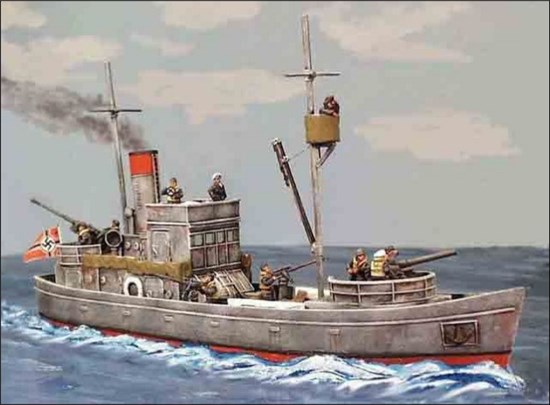
This picture, taken from the Britannia Miniatures website, shows the German Armed trawler model (AMP13) that proved too tempting at the "Colours" show last year. For silly money (£35 I recall), you get the resin hull and superstructure, all the crew, guns, masts, everything to make what you see here. The model sits on a base that is about 15mm bigger than the hull and is formed into waves so it's easy to paint to fit into your scenery boards. I guess, with a bit of surgery and a steady hand, you could remove the base and create the option of having the vessel in harbour.
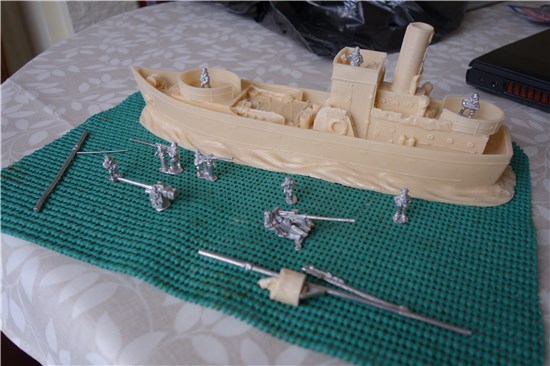
Getting home from the show, I put this away and only came back to it some 15 months later. This is what the bubble wrap revealed - a resin cast hull with the superstructure piece (comprising the cabin, funnel and rear gun deck) as a separate piece. The masts are white-metal as are the guns and crew. The man in the crows-nest is a resin casting. The fore mast/crows nest and the guns are shown here part assembled. The aft mast was very bent and so I will replace this with a plastic version using StripStyrene from Evergreen.
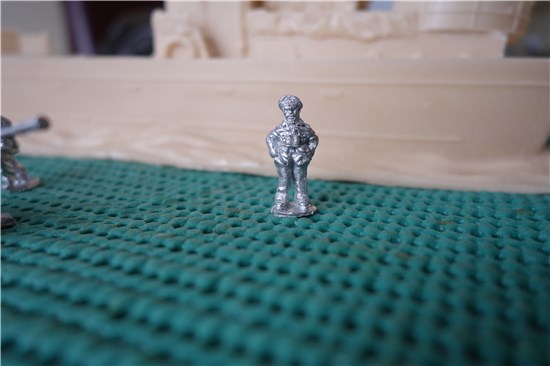
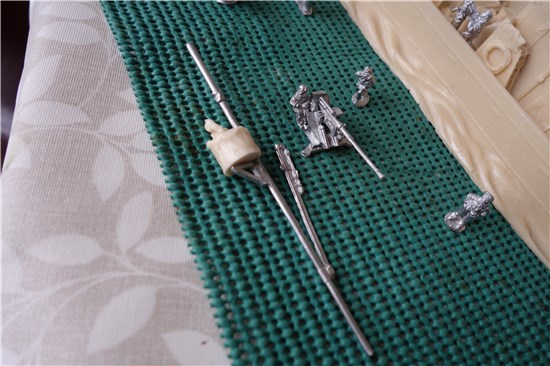
You can see (above left) that the captain is quite a little character whilst the guns are decent castings with very little flash. The crew are in "action" poses. There is also a junior officer for the bridge using a signalling lamp.
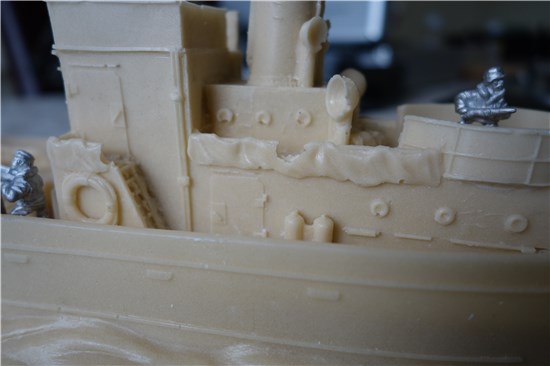
Some of the resin didn't travel/store well. These missing pieces will have to be replaced with Milliput modelling putty. The ventilation bells (not sure what they are called ) will be replaced with cast parts from my local model shop which, luckily, stocks lots of ship bits.
) will be replaced with cast parts from my local model shop which, luckily, stocks lots of ship bits.
This is certainly not going to be a quick project that I can knock out in a couple of evenings!! Not only am I a ship novice, but there is a lot to do with this kit. I have spent about 2 hours cleaning up and sanding the hull and superstructure already to get a decent fit and I reckon I have another evening of filling and sanding ahead of me.
Warning! If you are working with resin castings, please follow the basic rules;
> wear a mask - the dust is nasty
> wash your hands afterwards
> wash the model in warm soapy water to remove mould greases
> don't smoke around the model